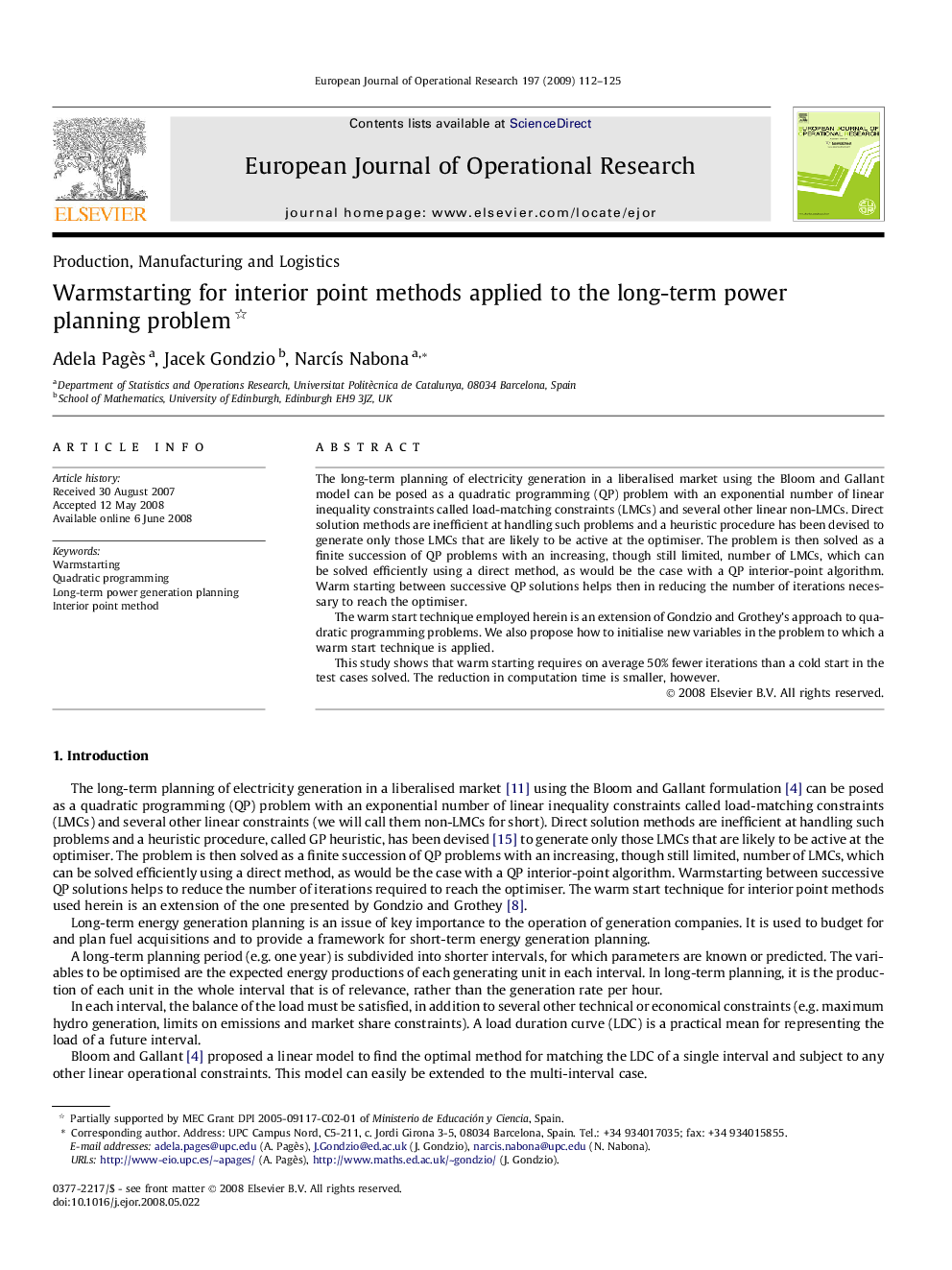| Article ID | Journal | Published Year | Pages | File Type |
|---|---|---|---|---|
| 482711 | European Journal of Operational Research | 2009 | 14 Pages |
The long-term planning of electricity generation in a liberalised market using the Bloom and Gallant model can be posed as a quadratic programming (QP) problem with an exponential number of linear inequality constraints called load-matching constraints (LMCs) and several other linear non-LMCs. Direct solution methods are inefficient at handling such problems and a heuristic procedure has been devised to generate only those LMCs that are likely to be active at the optimiser. The problem is then solved as a finite succession of QP problems with an increasing, though still limited, number of LMCs, which can be solved efficiently using a direct method, as would be the case with a QP interior-point algorithm. Warm starting between successive QP solutions helps then in reducing the number of iterations necessary to reach the optimiser.The warm start technique employed herein is an extension of Gondzio and Grothey’s approach to quadratic programming problems. We also propose how to initialise new variables in the problem to which a warm start technique is applied.This study shows that warm starting requires on average 50% fewer iterations than a cold start in the test cases solved. The reduction in computation time is smaller, however.
